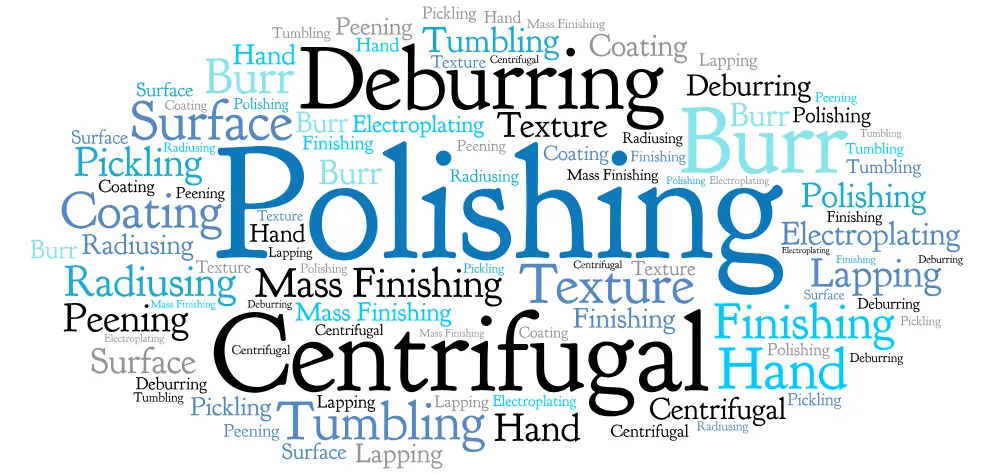
Abrasive
A material or tool consisting of hard particles used to wear down, rub away, or machine material. Abrasive materials are often used in finishing operations.
Abrasive Blasting
A process for cleaning or finishing by a means of an abrasive directed at the work piece at differing pressures & velocities. Grits available range from extremely fine (plastic media) to very course (aluminum oxide). A grit for almost any application.
Alloy
An alloy is another metal made of two or more elements. The chief alloying constituents added to aluminium are copper, magnesium, silicon, manganese, nickel and zinc. All of these are used to increase the strength of pure aluminium. The main
classes of alloys are the 2000 series (Al-Cu alloys), used mainly in the aircraft industry, the 3000 series (Al-Mn alloys) used mainly in the canning industry, the 5000 series (Al-Mg alloys) used unprotected for structural and architectural applications, the 6000 series (Al-Mg-Si alloys) which are the most common extrusion alloys and are used particularly in the building industry, and the 7000 series (Al-Zn-Mg alloys) which are again high strength alloys for aircraft and military vehicle applications.
Anodizing
A coating method that uses electricity to build an oxide layer on a ferrous work piece. In anodizing, the work piece is the anode. This process serves two functions: aesthetics and protection from scratching and erosion. Learn more about our anodizing services here.
Barrel Finishing
A mass finishing process that finishes parts inside a slowly rotating container filled with a solution and finishing media. Also called tumbling.
Burnishing
The smoothing of surfaces by rubbing, accomplished chiefly by the movement rather than the removal of the surface layer.
Burr
A sharp, unwanted projection on a machined work piece. Burrs are removed during finishing to increase the functionality and appearance of the part.
Centrifugal Barrel Finishing
High energy centrifugal barrel finishing machines also known as harperizer systems are the fastest and most cost-effective method for deburring and/or polishing mass parts or individual parts. Learn about our CBF services here.
Chemical Polishing
The improvement in an smoothness of a metal by simple immersion in an a suitable solution.
CNC (Computer Numeric Control) Machining
A control system where numerical values corresponding to desired tool or control positions are generated by a computer. Data is “dialed in” rather than controlled by cams and gears providing precise repeatable machine movements that can be programmed for optimal speeds, feeds and machine cycles.
Coating
A protective or decorative film applied to the surface of an object. Paint is a common type of coating.
Cold Working
The shaping of metal at temperatures much lower than the metal’s molten state, often at room temperature. Cold working adds certain properties to the metal, such as increased strength and improved surface finish.
Corrosion
Corrosion is the deterioration of metal. A variety of reasons can cause it.
Deburring
A finishing process that removes burrs from a work piece.
Deflashing
The process of removing residual aluminum, titanium, or stainless material used in the manufacturing process.
Diffusion Coating
An alloy coating produced by applying heat to one or more coatings deposited on a basis metal.
Electroplating
A coating method that uses electricity and a conductive solution to deposit a layer of plating metal on a metal or nonmetal work piece. During electroplating, the work piece is the cathode.
Electropolishing
The improvement in an surface finish of a metal effected by making it anodic in an an appropriate solution. A method of polishing metal using electricity. Special equipment processes metallic parts to ensure repeatable, micro-tolerance surface roughness finishing for medical equipment cleaning, aerospace parts cleaning, and industrial parts cleaning.
Finishing Services
A final process performed on a part. Finishing processes include cleaning, final sizing, polishing, and applying coatings. The process used to refine or roughen a surface to meet surface finish requirements or to clean, strengthen or prepare the surface for additional processing.
Finishing (Tumbling) Media
Grains of abrasive or non-abrasive material used in mass finishing and other finishing operations. Sand and ceramics are common materials in finishing media.
Flashing
Small bits of residual aluminum, titanium, or stainless material on a work piece.
Grinding
Grinding is an abrasive machining process that uses a grinding wheel or grinder as the cutting tool. It is used to finish work pieces that must show high surface quality and high accuracy of shape and dimension.
Hardcoat
Hardcoat is an anodizing process that also creates a durable surface finish on the metal.
Immersion Leak Testing
A leak test method where an object is immersed in a fluid and leak is indicated by the escape of air in the form of bubbles.
Lapping
A final finishing process that uses a fine abrasive to grind away small amounts of material from a work piece.
Mass Finishing
Finishing a group of pieces simultaneously, usually by barrel or vibratory finishing.
Media Blasting
A cleaning that involves blasting the metal surface with abrasives to remove dirt and also grease.
Passivation
The process of removing free iron and other ferrous elements from the surface of stainless steel components using an acid bath. It reduces the chemical activity on the metals’ surface. The passivation of stainless steel removes free irons and forms a passive oxide film layer which improves corrosion resistance.
Pickle
An acid solution used to remove oxides or other compounds from the surface of a metal by chemical or electrochemical action.
Pickling
The removal of oxides or other compounds from a metal surface by means of a pickle.
Radiusing
A type of deburring which entails the removal or rounding of sharp part edges formed during the additive manufacturing process.
Shot
The round finishing media used in shot peening. Steel, glass, and ceramics are common shot materials.
Shot Peening
A finishing method that uses a propelled stream of round shot beads to cold work metal surfaces. Shot peening corrects minor surface defects and strengthens the material.
Surface Roughness
Roughness includes the finest (shortest wavelength) irregularities of a surface. Roughness (referred to as tool marks) generally results from a production process or material condition. Roughness is measured in a transversal direction to the main grooves. – The mean arithmetical value “Ra” in μm is assumed for roughness measurements.
Surface Texture
The variation in the surface in the form of roughness, waviness, lay, and flaws.
Tumbling
A mass finishing process that finishes parts inside a slowly rotating container filled with a solution and finishing media. Also called barrel finishing.
Ultrasonic Cleaning
The process of removing contaminants from parts using high frequency sound waves and an appropriate cleaning solvent. Ultrasonic cleaning is an environmentally friendly alternative to the solvent based cleaners previously used.
Vibratory Finishing
A mass finishing process that finishes parts by rotating them inside a vibrating container filled with a solution and finishing media.
Vibratory Polisher
Vibratory bowl finishers operate by placing a mixture of your parts together with polishing media in a bowl-shaped machine that uses vibration to agitate the parts and media. At the end of the cycle, the parts travel up a ramp to discharge the parts and recapture the polishing media for the next batch of parts.
